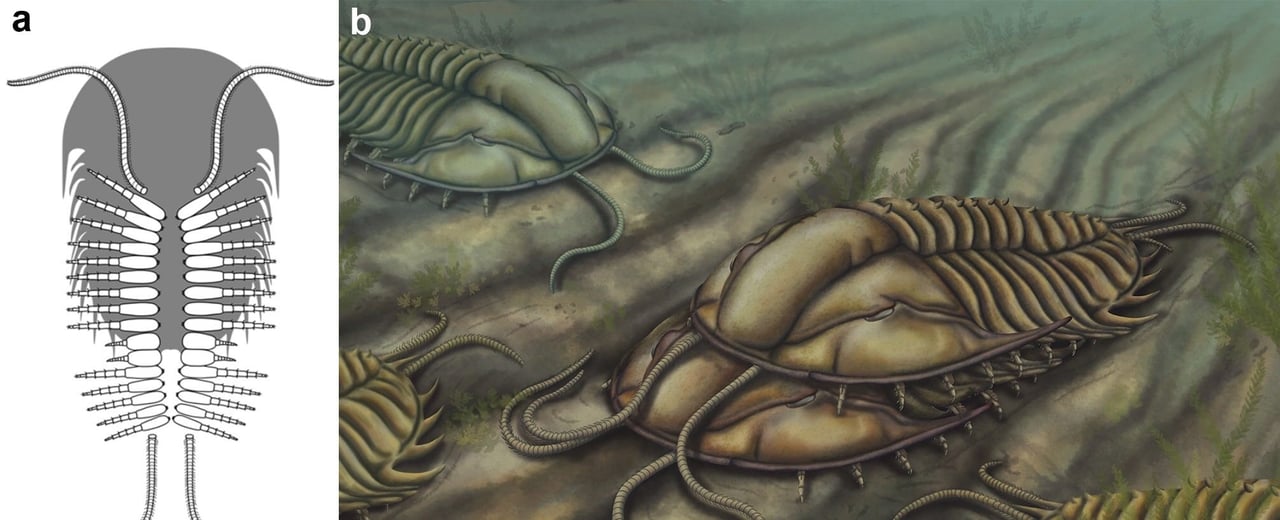(CN) — Understanding the mating behaviors of long-extinct animals is hard. A few severed fossilized appendages may help researchers with that.
Published in Geology, their study deals with trilobites, anthropods that inhabited Earth around 520-250 million years ago. Trilobites are likely the branching point of two major anthropod groups, the mandibulates and the chelicerates. Centipedes, crabs, and insects make up the mandibulate family while the chelicerates include spiders, scorpions and — important for this study — horseshoe crabs.
Doctoral candidate Sarah Losso and professor Javier Ortega-Hernández with the department of organismic and evolutionary biology at Harvard studied the mating behavior of trilobites from the mid-Cambrian fossil Olenoides serratus.
Unfortunately for scientists, studying animal mating behaviors from fossil records is difficult. When it comes to understanding the mating behaviors of extinct creatures, Losso said it “relies on either having specimens that died during the act of mating and got preserved or specimens that preserved morphology with specific mating functions. There are a few examples of the 'caught in the act' fossils, but not from the early Paleozoic Era.”

Fortunately, the broken appendages of one fossilized creature helped.
The study reports that one of the 65 specimens of O. serratus with hook-like legs called claspers was missing half of its exoskeleton, though it was otherwise well preserved. Because the appendages were broken, the researchers could see the limbs in greater detail than they would have with an intact exoskeleton hiding it from the researchers’ sight.
For this study, Losso and Ortega-Hernández compared O. serratus to the modern-day horseshoe crabs. Losso said that in paleontology, researchers often study the behavior, track development, and ecology of living animals to better understand the complexities of extinct groups. Trilobites and horseshoe crabs “have similar anatomy, ecology, and life history. Both live in the ocean and walk along the seafloor, making horseshoe crabs a useful comparison. The claspers of both horseshoe crabs and Olenoides serratus, the trilobite discussed in this paper, are similar in shape," Losso said.
In fact, both male horseshoe crabs and male O. serratus used claspers to hold onto females while mating, as seen in the image above.
However, this research method does have drawbacks. The main one, Losso said, was that for all their similarity in appearance, horseshoe crabs and O. serratus are not closely related. Losso compared it to a fossil bumblebee and a modern bumblebee, with the modern bumblebee giving researchers a better understanding of what the biology and life of a fossil bumblebee might be like.
Trilobites are up to 508 million years old and therefore do no have close living relatives for researchers to study. At the moment, paleontologists can only make educated guesses to fill the gaps of their knowledge.
However, they hope this new finding will aid their research into trilobites and the era they came from.
“The Cambrian period is a very important part of Earth history for animals because it is the first appearance of recognizable animals. Now we have evidence that not only did animals rapidly evolve during the Cambrian Explosion, but complex behaviors also evolved very early in their history,” said Losso.
Subscribe to Closing Arguments
Sign up for new weekly newsletter Closing Arguments to get the latest about ongoing trials, major litigation and hot cases and rulings in courthouses around the U.S. and the world.









